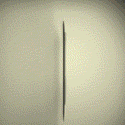
Hollywood made femme-centric history in 2020 with more female filmmakers than ever before directing top-grossing films. For the first time, three women were nominated at the Golden Globes for Best Director – Motion Picture.
After achieving these milestones, it seemed women were at the precipice of a new era. Unfortunately, the film industry regressed into old patterns in 2021 with women comprising only 17% of directors on the top 250 grossing movies, down from 18% the previous year. Out of the top 100 most popular movies at the box office in 2021 — women comprised 12% of directors on those films, down from 16% in 2020.
The research is the product of a report entitled the Celluloid Ceiling, which is produced annually by The Center for the Study of Women in Television and Film at San Diego State University. This year’s 24th annual ‘Celluloid Ceiling’ report found just 12 percent of directors of 2021’s top 100 films were directed by women, down from 16 percent the year before.
These numbers come in as female filmmakers like Jane Campion (The Power of the Dog) and Maggie Gyllenhaal (The Lost Daughter) have achieved notable critical successes this year and are seen as award-season contenders. It also is being released after several female filmmakers like Chloé Zhao (Eternals) and Nia DaCosta (Candyman) directed movies that topped box office charts. The research shows with data that these female achievements still remain the exception to the rule.
Appearances can be very deceiving. What’s going on for show at the top of Hollywood isn’t necessarily the norm for the industry. While Zhao won the Oscar last year for directing Nomadland, and Campion is a front-runner in this year’s race for The Power of the Dog, the percentage of women directing films actually declined in 2021. With the pressure of being politically correct, the industry does a lot of performative virtue signaling without actually targeting the issue at hand.
This creates a perception that women are gaining opportunity because it’s being shown in the mainstream, but the industry at large is a different story. Basing our perceptions of how women are faring on the well-deserved fortunes of just a few high-profile films can lead us to inaccurate conclusions about the state of women’s employment. While the headlines may be in the female favor, the facts and data are unfavorable towards women. As much of a feminist agenda that Hollywood portrays, this year more than 80% of films do not have a woman at the helm.
While change does tend to happen incrementally and slowly, it’s important to note some modest improvements in other areas. Women filled 25% of key behind-the-scenes roles such as directors, writers, executive producers, producers, editors, and cinematographers on the top 250 grossing films in 2021.
That was an increase from 23% in 2020. When you drill down into each individual role, there were other signs of progress. Women accounted for 26% of executive producers on the top-grossing movies, which was up from 21% in 2020, and 32% of producers, an increase from 30% in 2020. Seventeen percent of writers on the most popular films were women, which was the same percentage as 2020. The same held true for female editors (flat at 22%) and cinematographers (flat with 6%).
Additionally in 2021, women comprised 25 percent of directors, writers, producers, executive producers, editors, and cinematographers working on the top 250 grossing films, which was a slight increase from 2020’s 23%. The study credits the uptick to the increase of women working as executive producers and producers.

If we take the long view on the progress — or rather the lack of progress — on a few of these behind-the-scenes roles, it’s clear that progress for women isn’t as overwhelmingly progressive as Hollywood spins it to be. For example, the percentage of women working as writers has increased only 4 percentage points from 13% in 1998 to 17% in 2021. The percentage of women working as editors has increased only 2 percentage points from 20% in 1998 to 22% in 2021.
The percentage of women working as cinematographers has increased only 2 percentage points from 4% in 1998 to 6% in 2021. For the jobs of writers, composers, editors, and cinematographers, 72% of films employed at least 10 men in these key roles, whereas only 8% employed at least 10 women. The total percentage of women working behind the scenes has gone up just a glacial eight percentage points, from 17% in 1998 to 25% in 202. This means three out of every four top filmmaking jobs goes to a man.

REELated: Female directors kick ass in Golden Globe noms… finally
While the enigma of women in film appears to be trending in Hollywood, the reality is women in film simply need to be given even more equal opportunity and hired in Hollywood- not turned into a performative feminist headline

Megan Penn reports on the indie film market and anything that empowers women and underrepresented groups.













